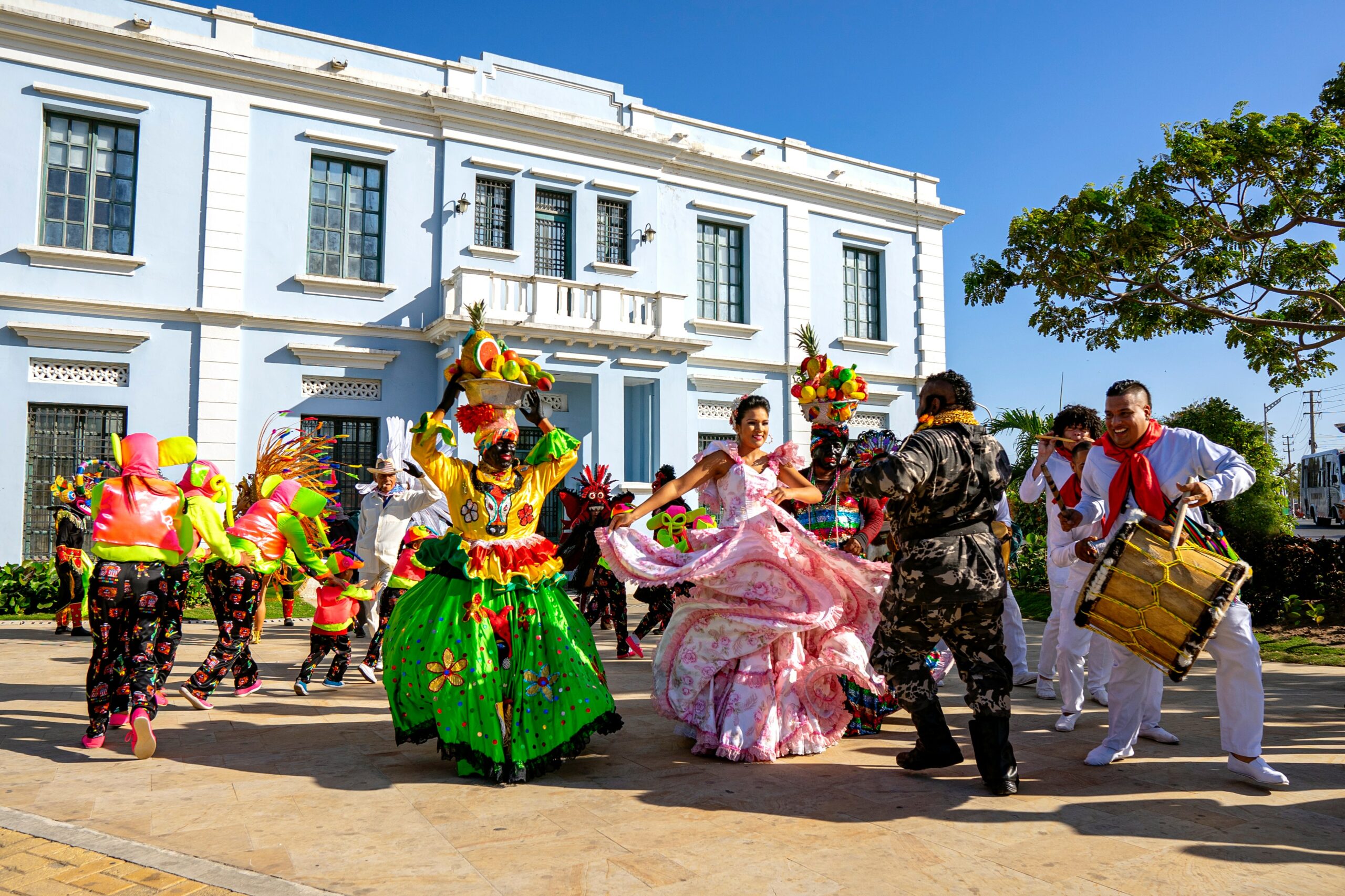Colombia, located in the northwest of South America, is one of the most visited countries in Latin America. Tourism has grown significantly over the past few years and will continue to grow exponentially. In fact, Colombia is the sixth most visited country in Latin America, generating 6,515.11 million US Dollars in tourism revenue. The diversity of regions and the cultural emergence that tourists experience in every activity have turned Colombia into a perfect destination for experiential tourism. Many factors make Colombia such a desired destination. The variety of food that every single province has to offer will make any tourist taste the traditions and the history of the culture through a single bite. The many festivities and cultural celebrations can make tourists learn the narratives that shaped the country into what it is today, and also provide an explanation of the traditions that are so rooted in the everyday lives of Colombian people. The historical monuments around the cities provide another opportunity to understand what were the most important events throughout the history of Colombia that moulded the culture. And lastly, the extraordinary landscapes that go from tropical beaches to the most biodiverse cold forests and paramos. Although these are some of the main factors that make Colombia one of the most visited countries in Latin America, the music and dance culture should be, in my opinion, another important factor to take into consideration if one wants to experience the Colombian culture fully.
The culture of dancing in Colombia has had significant importance in the continuation of the culture from generation to generation. Music and dancing are so rooted within the culture that children learn how to dance at a very early stage of their lives. Family festivities are the perfect place for children to watch and learn how their parents continue to carry on thousands of years of tradition. Once children learn, they’re ready to take full participation in cultural festivities. Dancing becomes not only a cultural representation of the history and traditions of the country. It has also shaped the way Colombian people behave and act. The warm recipiency that every tourist gets due to the outgoing personality of many Colombians, is a consequence of the joy, pride, and confidence that Colombian people get from their music and dancing culture. The energy that is put into dancing and celebrating their lives is transmitted to the way they walk, talk, and behave.
There are so many types of dances in Colombia that it will be impossible for me to describe them all in a single blog. However, these are some of the traditional dances that have been the most prominent and significant for me growing up in Colombia, and more especially, the ones that I’ve had the chance to learn and experience myself.
Cumbia
Very prominent in the Caribbean coast of Colombia. According to the official tourism website of Colombia, Cumbia was created from a mix of African, European and indigenous instruments and dance steps. Cumbia is Colombian’s national dance, it is one of the most representative rhythms and the source of inspiration for the creation of much more traditional music in Colombia. It is often danced at night, with all the couples dancing in a circle while a Cumbia Band plays the music.
Vallenato
Originated from the rhythms of Cumbia. It is most prominent in the city of Valledupar, located in northeastern Colombia. It originated on the coast of Colombia and was first introduced as stories that were sung from town to town. Before the printing was brought to Colombia, the way to bring the news to other towns was through messenger singers, who went from town to town singing stories and entertaining the people. These singers, or also called Juglares, quickly went from only telling stories to singing about love, tragedy, and comedy. Vallenato grew and became one of the most important music genres of Colombia. Nowadays Vallenato is often listened to in family reunions and festivities. It consists of three main instruments: accordion, caja (a small drum) and guacharaca.
Salsa
Most prominent in the regions of Valle Del Cauca, more specifically in the city of Cali, also known as the capital of Salsa in Colombia. Paradoxically, originated in New York City from a mix of Cuban and Puerto Rican music. Salsa moved to Cali during the 1970s thanks to many Colombian sailors who brought the rhythms from New York to the working-class neighbourhood of Barrio Obrero in Cali. Many Salsa bands in Cali quickly began to form and expand the music to the rest of Colombia (Castillo, Dec 2, 2017). Salsa dance is well known for its passionate, and extremely coordinated moves.
Colombia is a country full of beautiful traditions, and it is, in my opinion, one of the best destinations for experiential tourism. The emergence that every tourist gets when submerging in the culture is very valuable and enriching. Although there are many reasons to visit such a beautiful destination, dancing and music should be something every tourist experience when visiting Colombia. There are no other aspects of a travel experience through Colombia that entails so much of the culture than music and dancing.
References Cromwell, R. M., Castillo, M., & Lyons, E. (2017, December 2). The rhythm of Colombia's salsa capital. The New York Times. Retrieved December 10, 2021, from https://www.nytimes.com/2017/12/02/style/colombia-salsa-clubs.html?auth=link-dismiss-google1tap. Degenhard, J. (2021, July 20). Tourism sector size in Latin America and the Caribbean 2020, by country. Statista. Retrieved December 10, 2021, from https://www.statista.com/forecasts/1153740/tourism-sector-size-in-latin-america-by-country. Everything you need to know about cumbia. Colombia Country Brand. (2021, February 16). Retrieved December 10, 2021, from https://www.colombia.co/en/colombia-culture/dance/everything-need-know-cumbia/.

